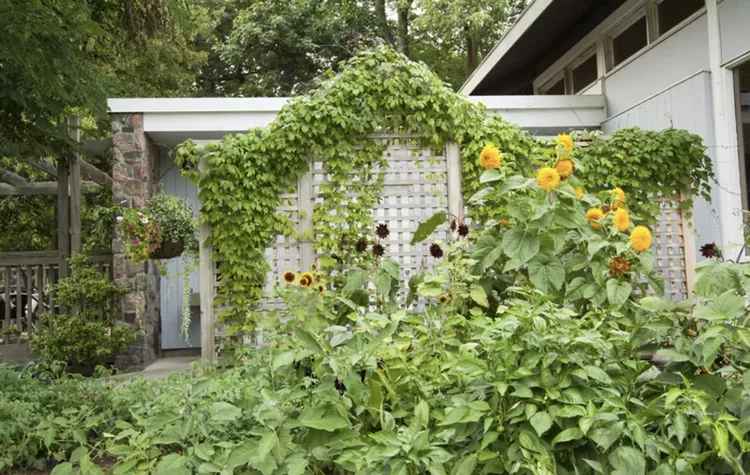Anyone can use chaos gardening to make the most of leftover seeds. You don’t need to plant seeds in rows or plan landscapes. Instead, mix your old seeds together and try them out. Chaos gardening is completely unplanned, unlike companion planting where certain crops are planted close together to promote better growth. This gardening trend will not only help you use up your seed stock, but it will also add excitement, surprise and chaos to your garden.
Even though the point of chaos garden is to have fun and relax, there are a few tips that can help you get the most out of it. Our guide to chaos garden is here.
What is Chaos Gardening exactly?
Experts, books and instructions on seed packages encourage gardeners to plant seeds together for each crop, leaving a certain space between them. The rules are there for a good reason. Planting seeds in rows and with a certain spacing allows for optimal growth. Chaos gardening is about throwing out all the rules.
Consider chaos gardening a low-risk experiment that will also help you get rid of your old leftover seeds. Some seeds you purchased years ago might not germinate, but others may flourish. The results can be beautiful, surprising, and educational. They are also liberating, especially for gardeners who want to have a perfect-looking garden.
Collection of seeds in red boxes for chaos gardening
How to Plant a Chaos Garden
You can create your own chaos garden if you have an empty patch of land in your vegetable garden or yard, or even a large planter. Here are some basic guidelines to get you started.
Grab Your Seeds
Bring out all your seed packets that you have collected from previous seasons. All vegetables, herbs, annual fruits, like melons, ground cherries, and flowers are fair game. It doesn’t matter if the seeds you have are several years past their recommended viability date. They may still surprise you.
Sort your seeds now by size. Sort seeds by size. Put larger seeds, such as beans, peas and cucumbers in one bowl, while smaller seeds, like carrots and lettuce, should be placed in another. It is best to plant the largest seeds first. This will help you get better results.
You may need to pre-soak the seeds because they are likely from a few decades ago. Add warm water in each bowl to cover seeds and soak them overnight. Next morning, dry your seeds on paper towels, or a dish towel. Keep the large and small seed separate. To make it easier to scatter the seeds, mix a few handfuls fresh, dried potting soil in each bowl.
Closeup of person digging in soil using a garden fork and rain boots with wheelbarrow as background.
Prepare the soil
You can be as fastidious or lazy as you like with this chaos gardening. You can either turn the soil over as you would normally before planting or simply scratch the top few inches of the soil with a rake. You can also pour compost on top of the soil and then plant your chaotic garden.
Your chaos garden doesn’t need to be planted in the ground. You can use a raised bed, a large plant pot, a planter box or even a kiddie pool or stock tank with drainage holes as a container to grow your chaos garden.
Plant Your Seeds
Start by planting large seeds. Spread handfuls of large seeds evenly over the soil. Once the large seeds have been used up, you can add from half an inch to one-inch of potting or compost on top.
Sprinkle the seed mixture on top of the soil. Then, add another thin layer of compost or potting soil.
Back yard with a watering can and a chaos garden
Tend Your Chaos Garden–or Not
You can now be as hands off or hands on as you wish. Some chaos gardeners let nature do its thing, letting weeds grow and waiting for rain rather than watering them regularly.
You can also tend to your chaos garden like you would any other part of your garden, ensuring that the plants get enough water, removing weeds and supporting or trellising larger plants which may shade others. You decide!
See What Grows
Here’s the exciting part: watching what grows in your chaotic garden. Perhaps the sunflowers that you planted many years ago will show up, or perhaps the melons from an heirloom you saved two seasons earlier will germinate. It’s possible that nothing will germinate, and that’s fine! A chaos garden’s purpose is to encourage you to let go of perfectionism and embrace the chance. You had some fun, and you made room for the next year’s seeds in your stash.





